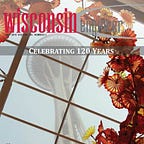S’Not Impossible Anymore: Capturing the Structure of RV-C
By: Gabriela Setyawan
For more than fifty years, the causes of the common cold have been studied at UW-Madison. Recently, the focus has shifted to asthma research. 50 years ago, samples of children’s snot were placed directly into cell cultures to identify cold-causing virus agents. The common rhinoviruses grew well in the cell culture and could be identified by the holes, or “plaques” they created in the cell culture sheets. However, while this technique helped to find RV-A and RV-B, other viruses did not grow well under the same standard conditions and were missed in the initial screening studies. This includes the whole species of RV-C.
What makes RV-C different from RV-A and RV-B? RV-C requires a receptor called Cadherin-related protein 3 (CDHR3), which is a very special protein. It is displayed on the apical (top) surfaces of ciliated lung cells but only if the correct gene form, or allele for CDHR3, is available. All humans have CDHR3, but only those whose genetics encode tyrosine at position 529 of the protein Y529 instead of cysteine 529 (Cys529) can properly display CDHR3 on the surface of their cells where it is accessible to the virus. Severe asthmatics have this allele (Tyr529) as part of their genetic makeup, and therefore get more severe RV-C infections, which in turn trigger their asthma symptoms.
“RV-C is not a new virus, but the ability to detect it is new,” says Dr. Ann Palmenberg, a professor in the UW-Madison biochemistry department and the Institute of Molecular Virology. Working with collaborators at UW-Madison, she helped detect multiple RV-C isolates a few years ago through sequence analysis. She uses this information to determine why RV-C grows so poorly in standard tissue culture. The trick was that the RV-C has a unique protein receptor to bind to cells. CHDR3 is usually found only on the surface of native lung cells, not cultured cells. Luckily, CDHR3 cells can be provided by recombinant engineering and cultures can be made that will support RV-C growth. In the past, before this discovery, 40% of anti-RV clinical trials failed because they were not aimed at the right virus. Now, with the new sequencing and receptor information, Palmenberg’s RV-C studies can potentially be used to design the right drugs to combat diseases caused by RV-C, as well as the RV-A and RV-B.
As part of those studies, her group worked with collaborators at Purdue University to map the atomic structure of RV-C with cryo-electron microscopy (cryo-EM). This is a relatively new technology that can take very high 3D resolution photographs and videos of virus particles or even individual proteins. By collecting the patterns of thousands of images, the cryo-EM can build the whole structure of RV-C. To do that, the biological sample in solution is applied to a carbon grid, then frozen in liquid ethane. Under the high-power microscope, the grids are bombarded with electrons to collect the images. Before cryo-EM techniques were available, the RV-C could not be studied at the atomic level, because alternative structure techniques used crystallography, which required a much larger sample of the virus than it was possible to grow. Crystallization is less efficient than cryo-EM, and in the past it took several years of work just to produce a single virus structure. With the RV-C, Palmenberg’s lab was able to deliver a single sample to her colleagues at Purdue University, and they were able to fully resolve the complete atomic structure of RV-C15a in just three days using cryo-EM.
Palmenberg’s lab also works extensively with Dr. James Gern, a professor at the UW-Madison medical school whose research interests focus on allergy and asthma. Dr. Gern specializes in studying viral and environmental factors that contribute to respiratory illnesses. The Palmenberg-Gern collaboration is trying to reconstruct a patient’s childhood immunology history using samples collected by the Gern lab and identify how viruses, specifically rhinoviruses, played a role in that history. To do this, they have cloned various RV virus strains, made recombinant viruses, and probed the regions of the virus’ outer capsid shell. Then, based on the information found, diagnostic chips containing bits of CDHR3 proteins can be reacted with patient blood serum samples, and tested for reactivity. This research is aimed at identifying disease-causing viruses that might have affected a child throughout their lifetime. This information, in addition to the child’s CDHR3 genotype, can help the child receive the correct treatment.
“Every discovery we do is aimed at being transferable in the clinics. It is amazing,” says Palmenberg.
Through their collaboration, Ann Palmenberg, James Gern, and her colleagues at Purdue University are expanding the frontiers of asthma research and increasing the accuracy of asthma diagnosis. RV-C research has the potential to exponentially increase the amount of information we have on treating asthma, and it’s only through the application of new technical innovations such as cryo-EM structures that we can hope to potentially cure such diseases.
